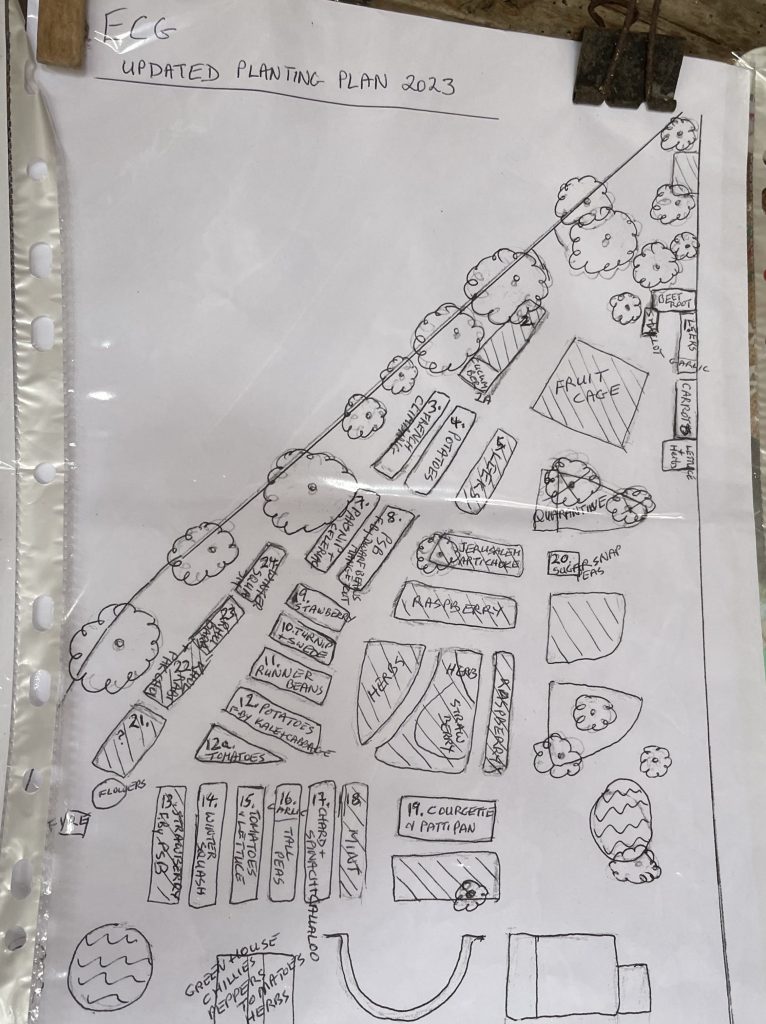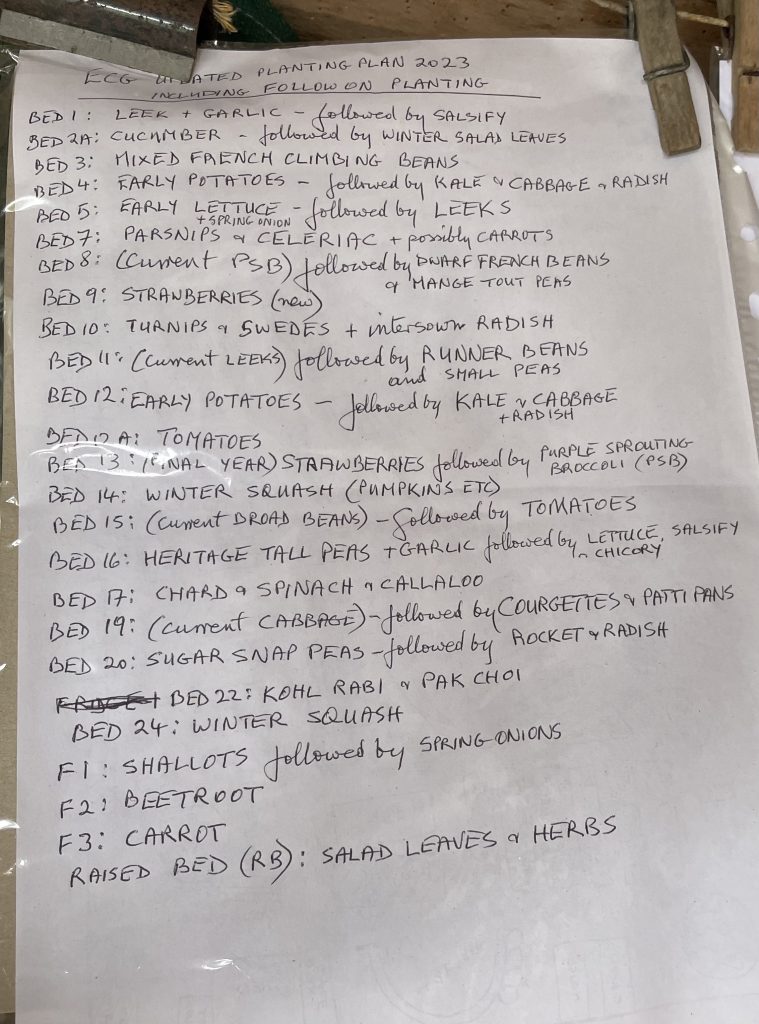We rotate our beds, and learn from past growing outcomes.
We are finding ways of adapting to Climate Change.


So why do we call this Permaculture? The word Permaculture comes from ‘permanent culture’ which means a way of doing life that has the capacity to last well beyond the final drop of oil, a way that enhances our lives rather than oppressing us, a way of generating what we truly need without damaging the planet that provides it. Our urban garden demonstrates this by providing food while taking as little as is possible from beyond its borders.
We put in local human energy, inspiration, design, labour, enthusiasm and recycled material resources. Some inputs come from further afield such as tools and the fence and are necessary long term investments of embodied energy. The primary outputs are fresh food, exercise, comradeship, skill sharing and a healthy garden ecosystem. This balance is designed to keep our footprint as small as possible.
Growing annual vegetables is not a natural activity. Within the garden we strive to keep the balance of nature by providing habitats for the widest possible biodiversity. All are invited to feast, from the micro organisms which compost the green waste, to the frog that hides in the herb bed and gobbles slugs including the rats who clear up our lunch crumbs and the robin who swallows worms, to the gardeners who collect seeds and eat the produce.
The design is the framework that allows all this to happen in harmony. The water system, shelter, volunteers, ponds, growing beds, paths, trees, the willow that grows beside the loo, even the nettle bed are linked in a chain of interdependence which supports the whole.
Isn’t it all that just common sense? Well, yes, and thats the beauty of it. And the more we, as individuals, work with the principles of permaculture the deeper our appreciation of the complexity of our environment becomes and the less we need to fight it with chemicals and machines.
